Abstract
The uptake of sixteen 14C-labeled amino acids by the indigenous heterotrophic microflora of Upper Klamath Lake, Oregon, was measured using the kinetic approach. The year-long study showed a seasonal variation in the maximum uptake velocity, Vmax, of all the amino acids which was proportional to temperature. The maximum total flux of amino acids by the heterotrophic microflora ranged from 1.2 to 11.9 μmol of C per liter per day (spring to summer). Glutamate, asparagine, aspartate, and serine had the highest Vmax values and were respired to the greatest extent. The percentages of the gross (net + respired) uptake of the amino acids which were respired to CO2 ranged from 2% for leucine to 63% for glutamate. Serine, lysine, and glycine were the most abundant amino acids found in Upper Klamath Lake surface water; at intermediate concentrations were alanine, aspartate, and threonine; and the remaining amino acids were always below 7.5 × 10-8 M (10 μg/liter). The amino acid concentrations determined chemically appear to be the sum of free and adsorbed amino acids, since the values obtained were usually greater than the (Kt + Sn) values obtained by the heterotrophic uptake experiments.
Full text
PDF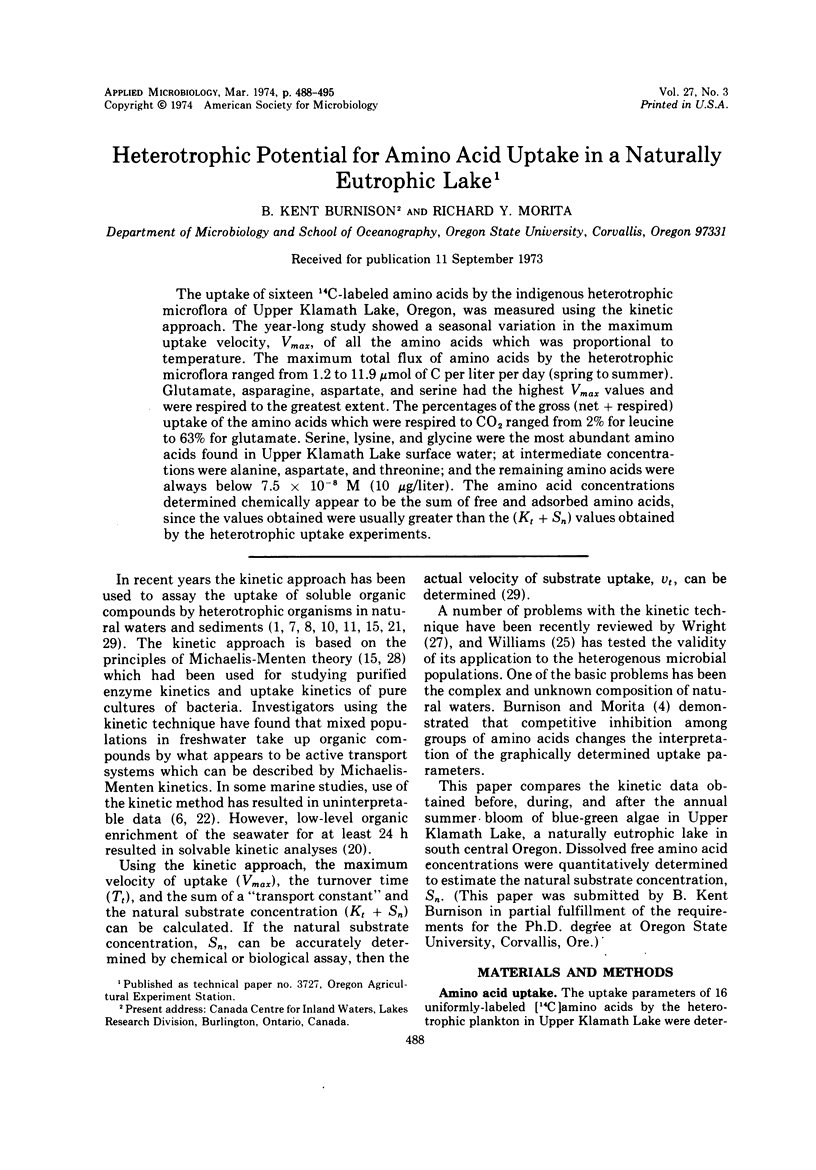
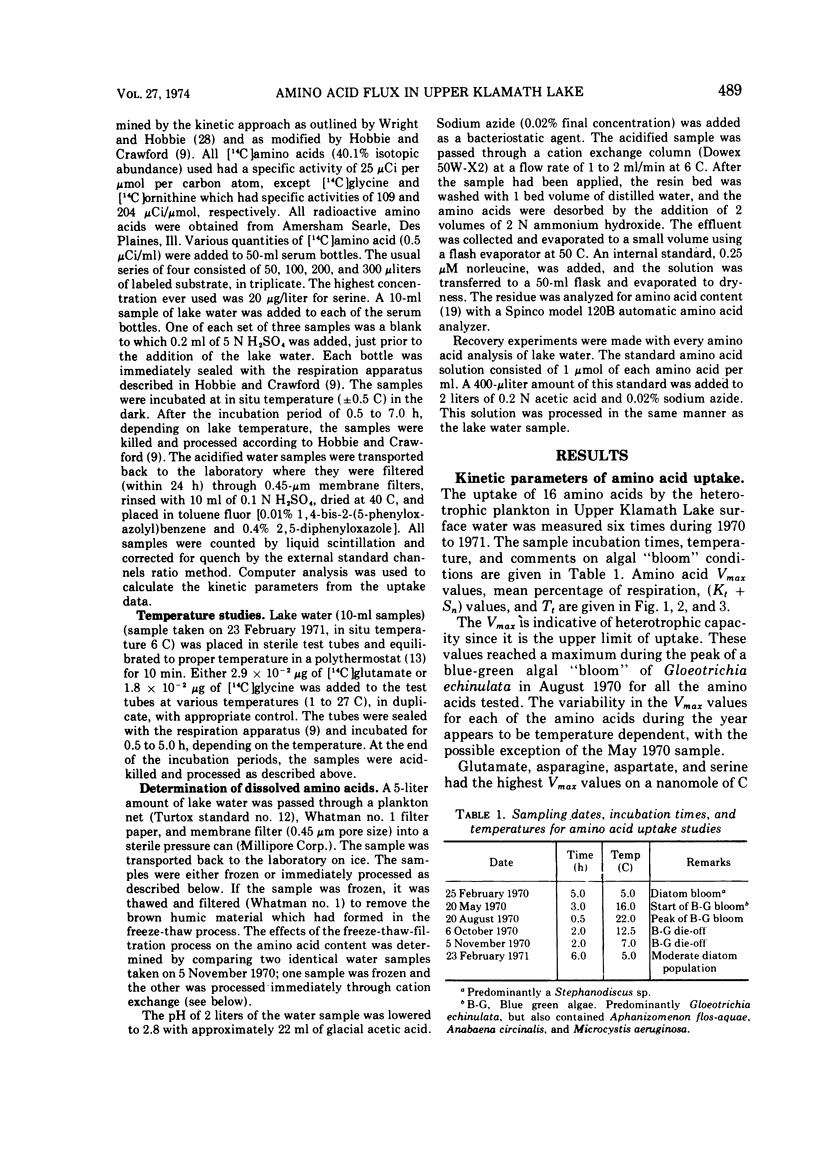
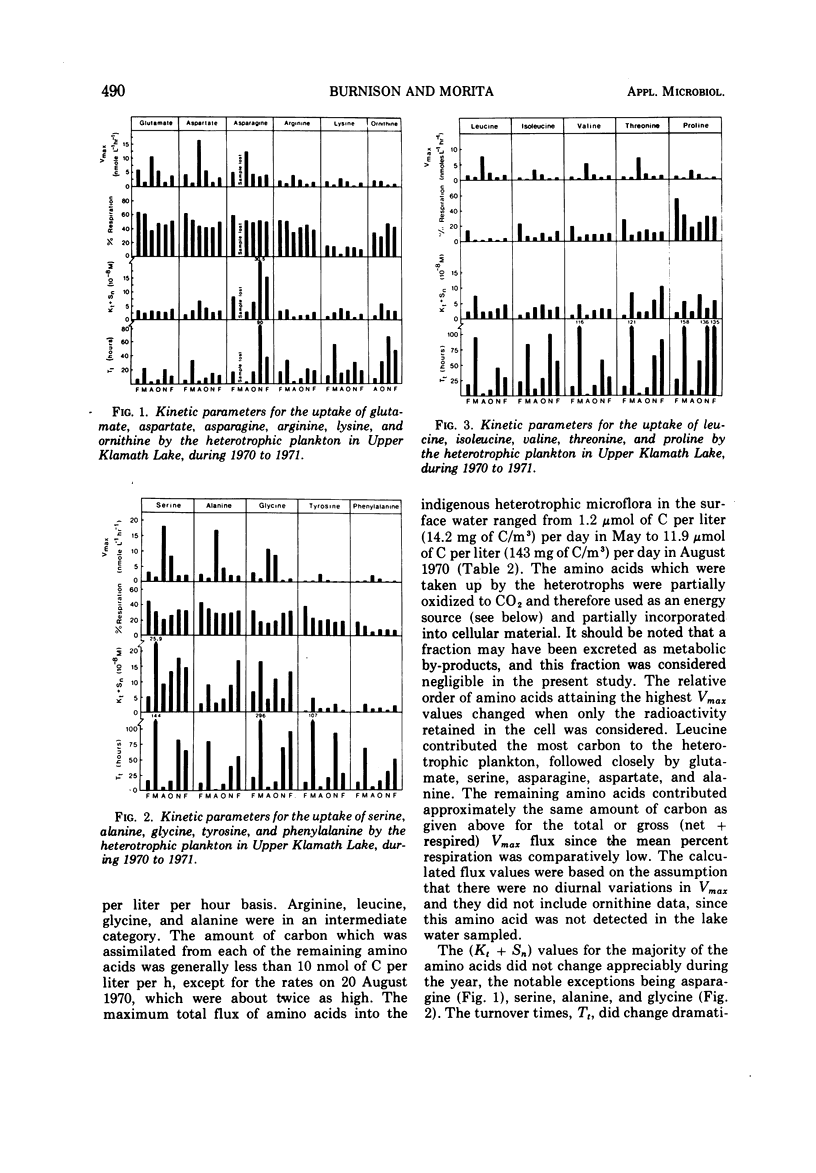
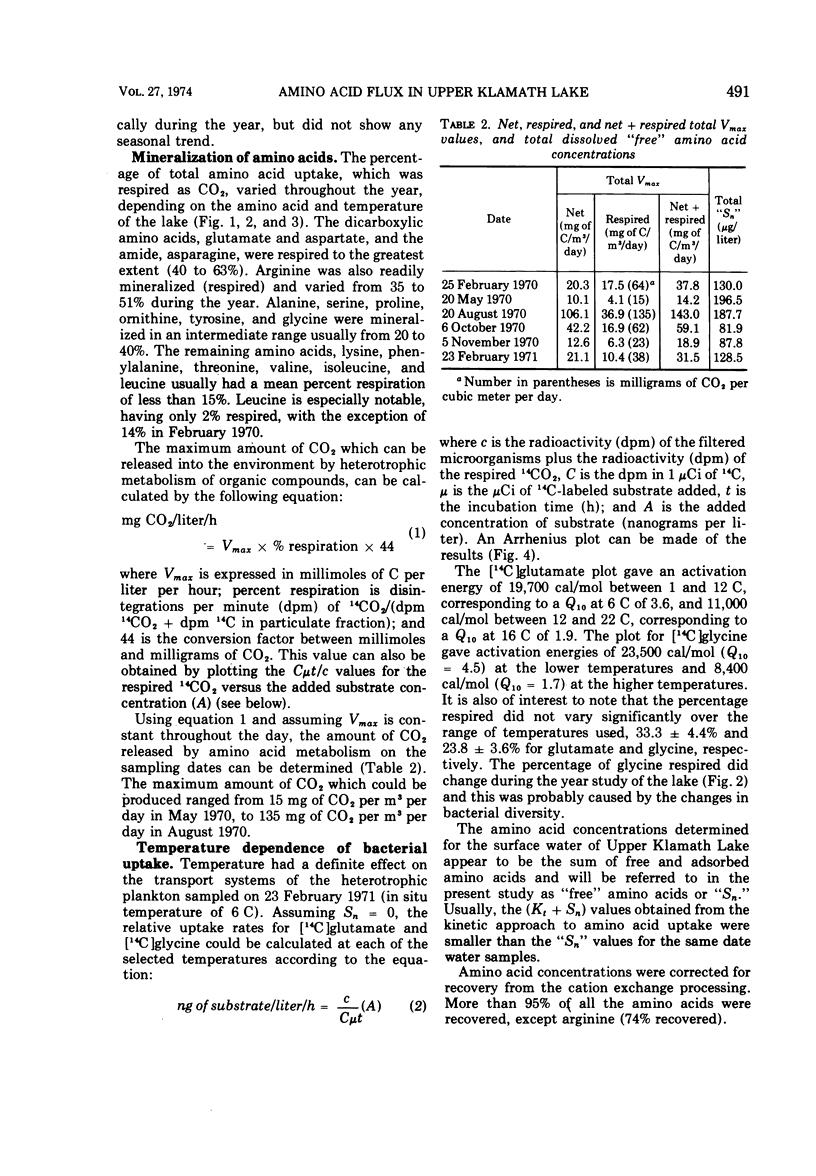
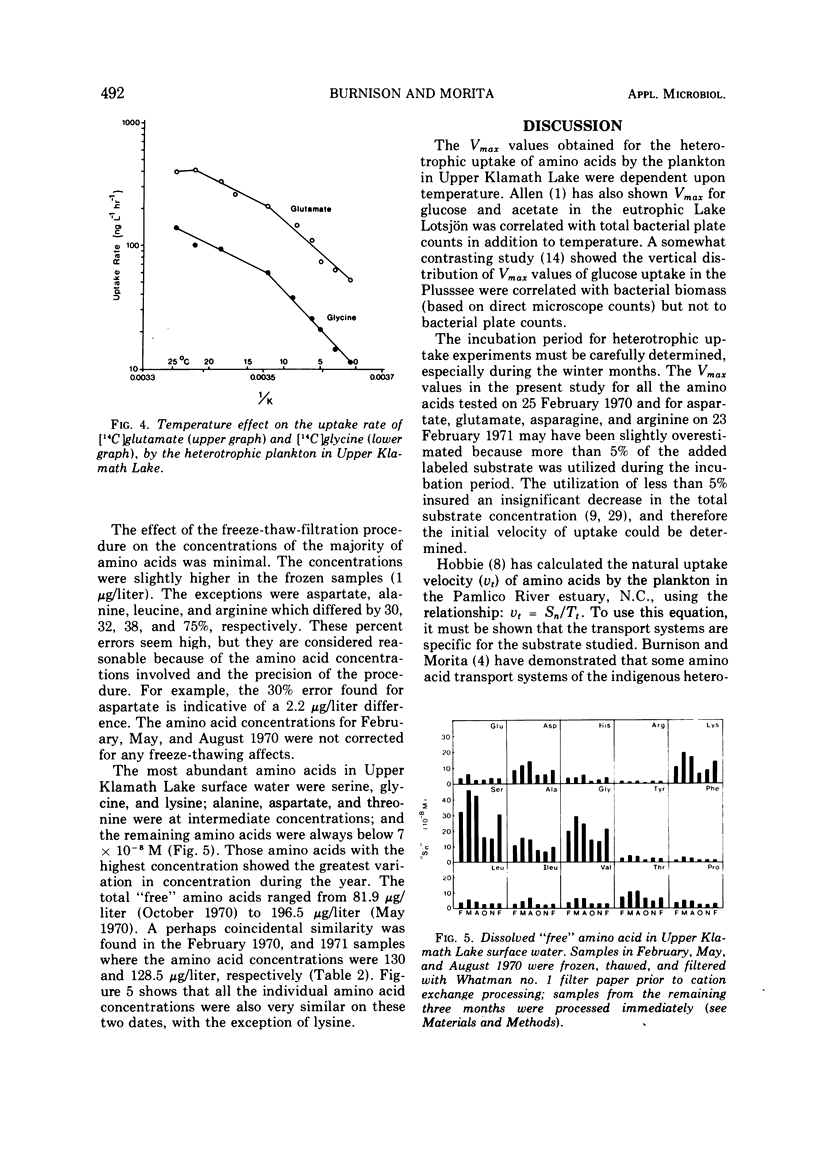
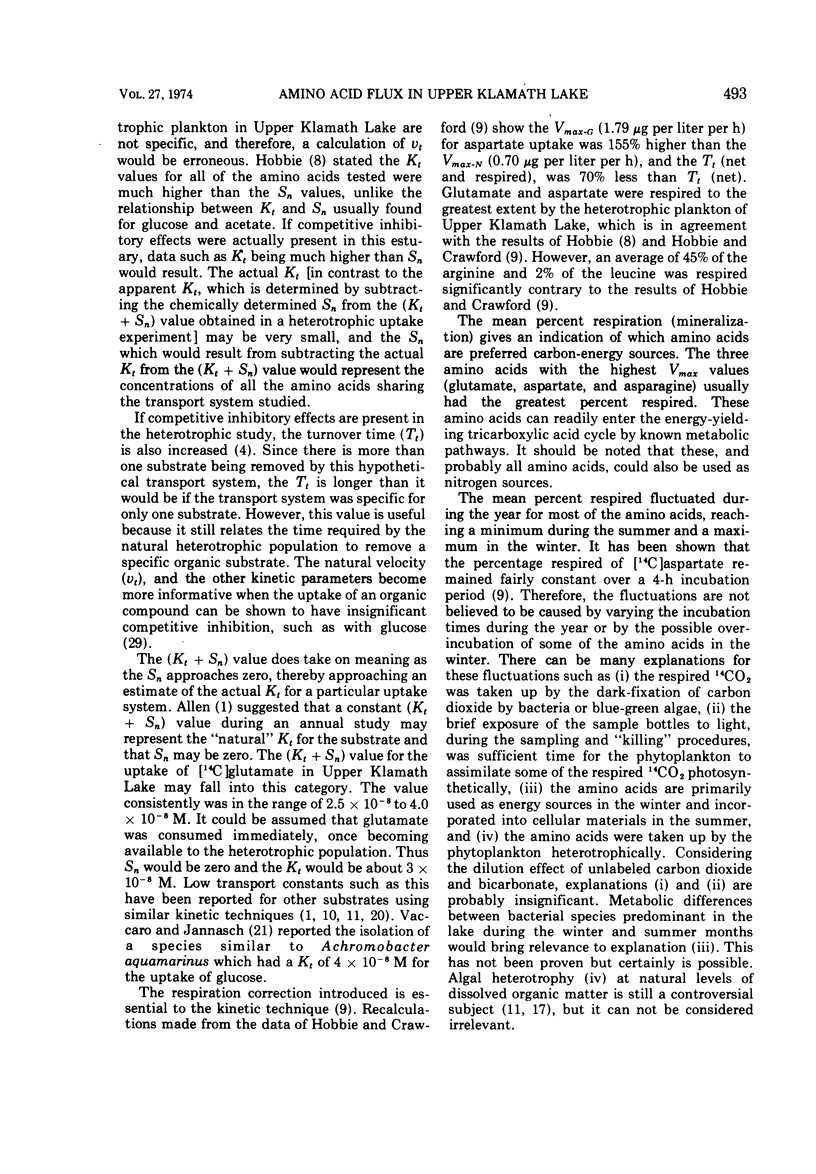
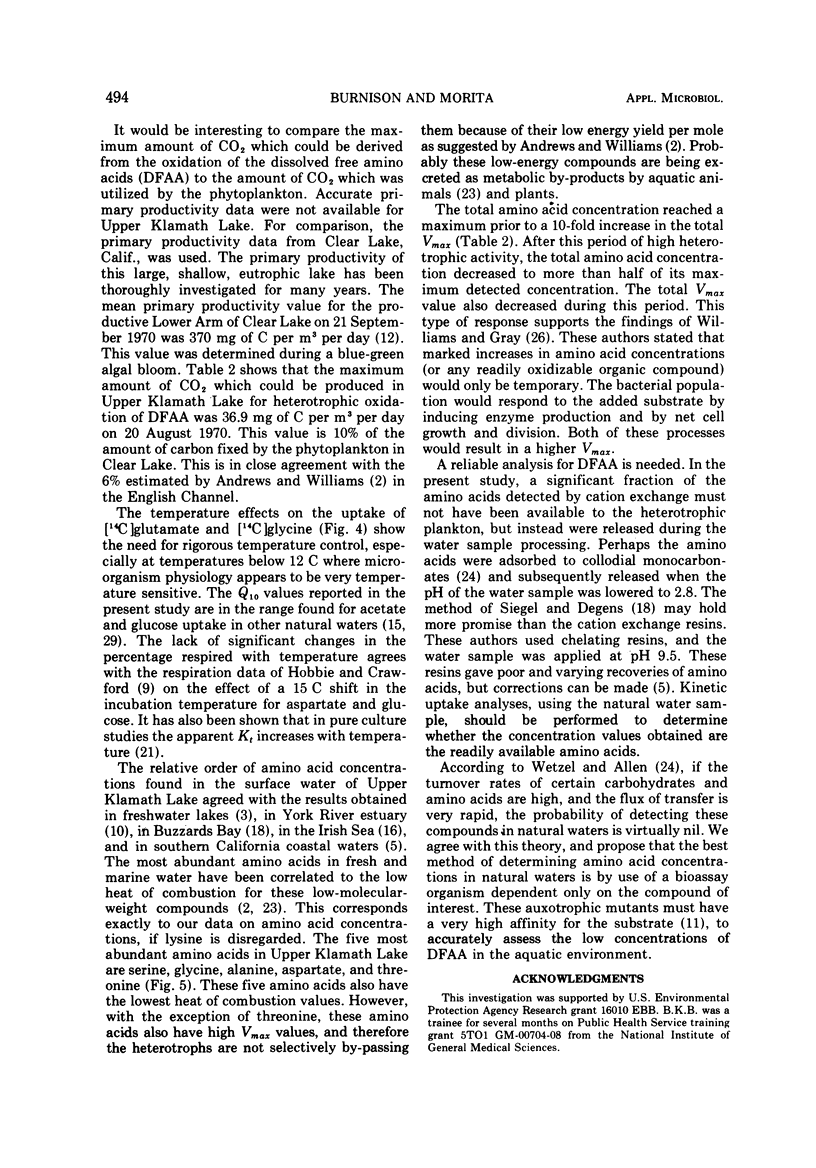
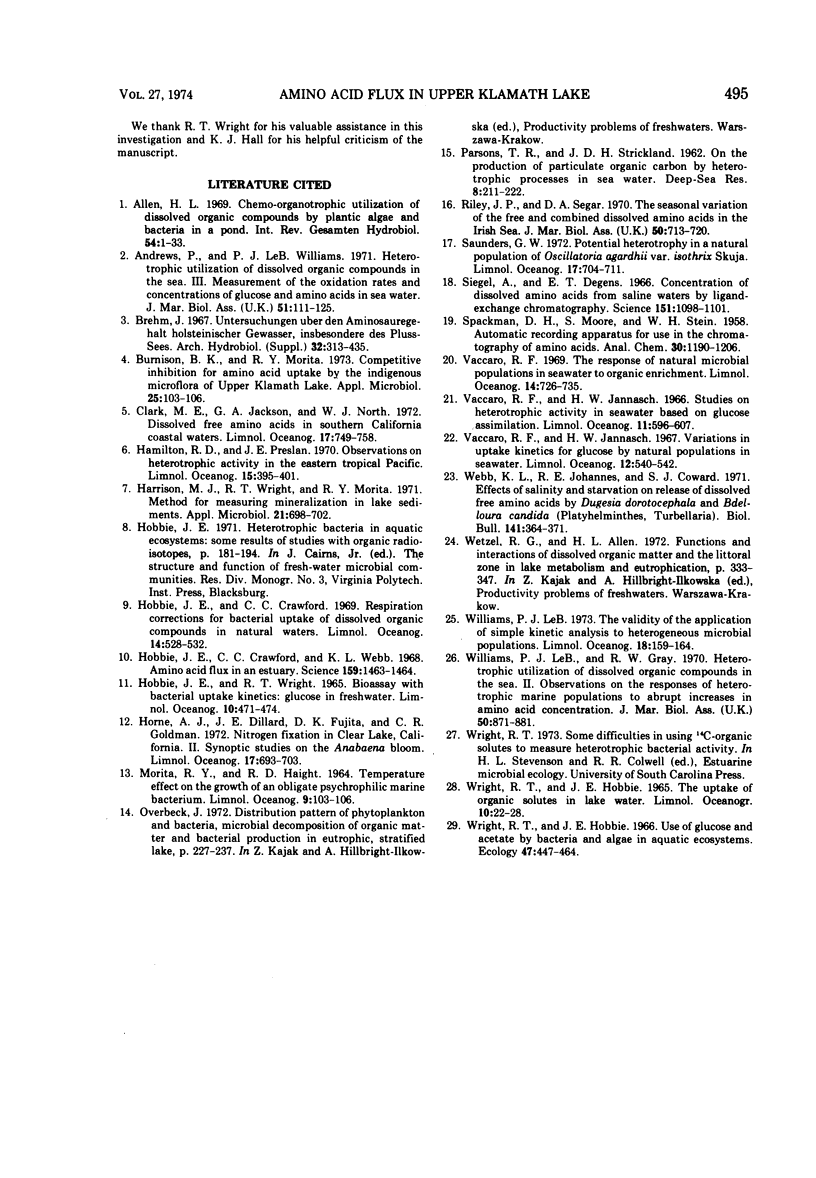
Selected References
These references are in PubMed. This may not be the complete list of references from this article.
- Burnison B. K., Morita R. Y. Competitive inhibition for amino acid uptake by the indigenous microflora of Upper Klamath Lake. Appl Microbiol. 1973 Jan;25(1):103–106. doi: 10.1128/am.25.1.103-106.1973. [DOI] [PMC free article] [PubMed] [Google Scholar]
- Harrison M. J., Wright R. T., Morita R. Y. Method for measuring mineralization in lake sediments. Appl Microbiol. 1971 Apr;21(4):698–702. doi: 10.1128/am.21.4.698-702.1971. [DOI] [PMC free article] [PubMed] [Google Scholar]
- Hobbie J. E., Crawford C. C., Webb K. L. Amino acid flux in an estuary. Science. 1968 Mar 29;159(3822):1463–1464. doi: 10.1126/science.159.3822.1463. [DOI] [PubMed] [Google Scholar]
- Siegel A., Degens E. T. Concentration of dissolved amino acids from saline waters by ligand-exchange chromatography. Science. 1966 Mar 4;151(3714):1098–1101. doi: 10.1126/science.151.3714.1098. [DOI] [PubMed] [Google Scholar]


